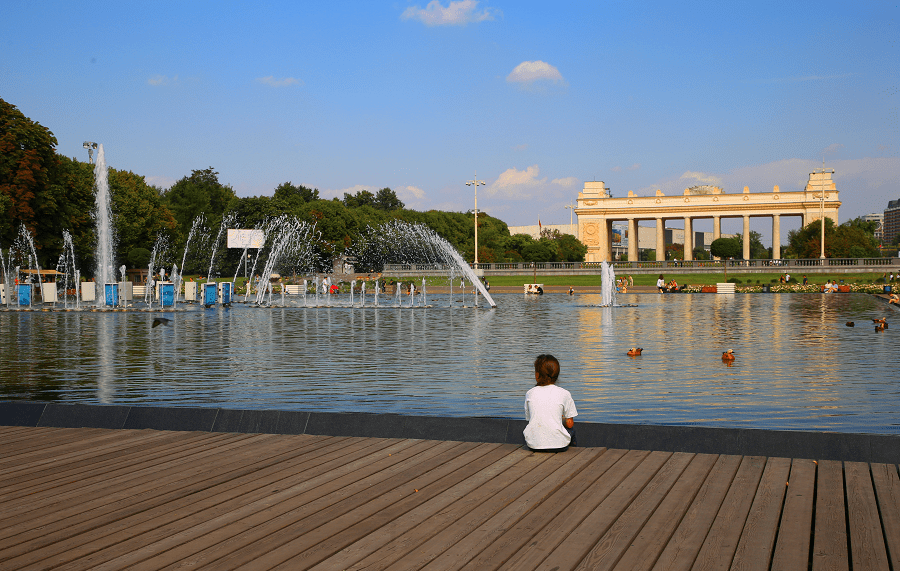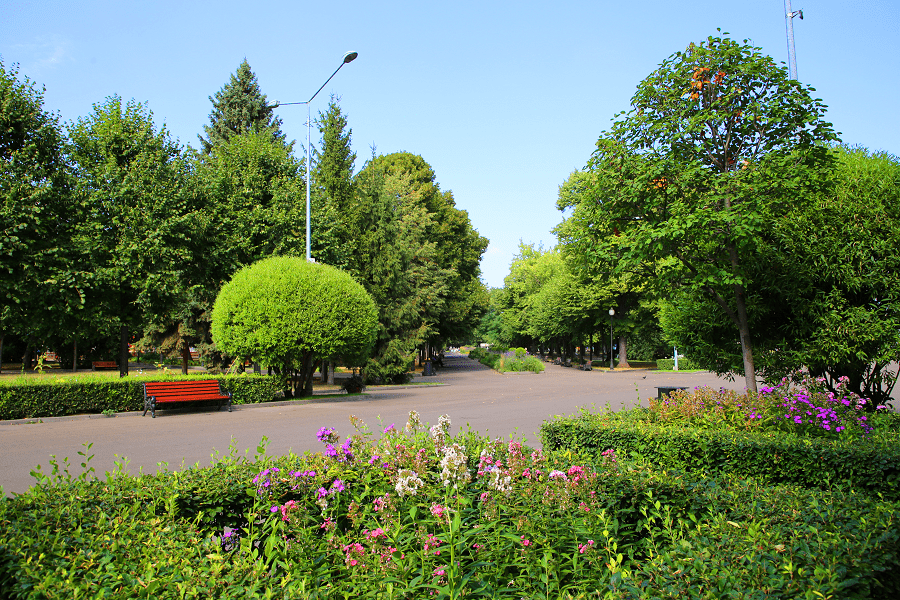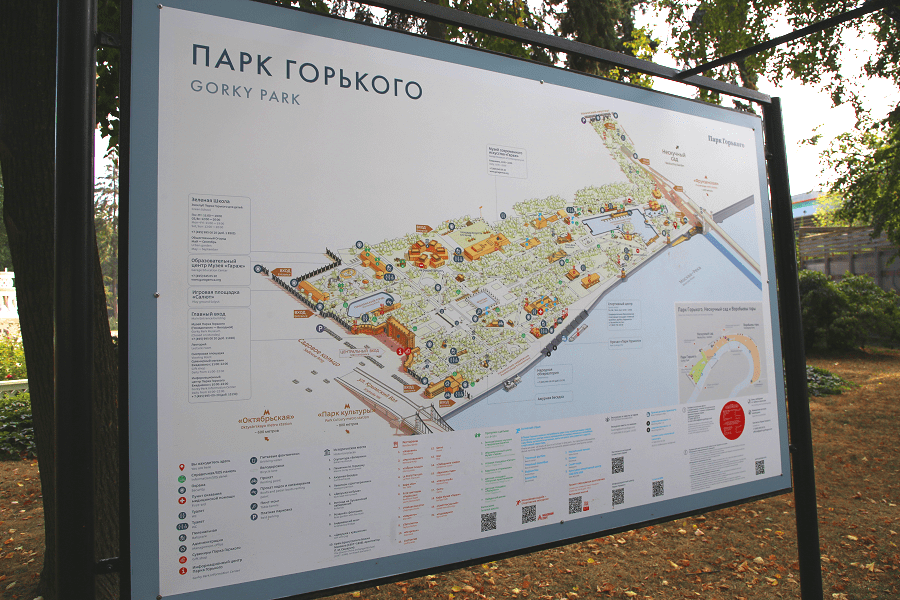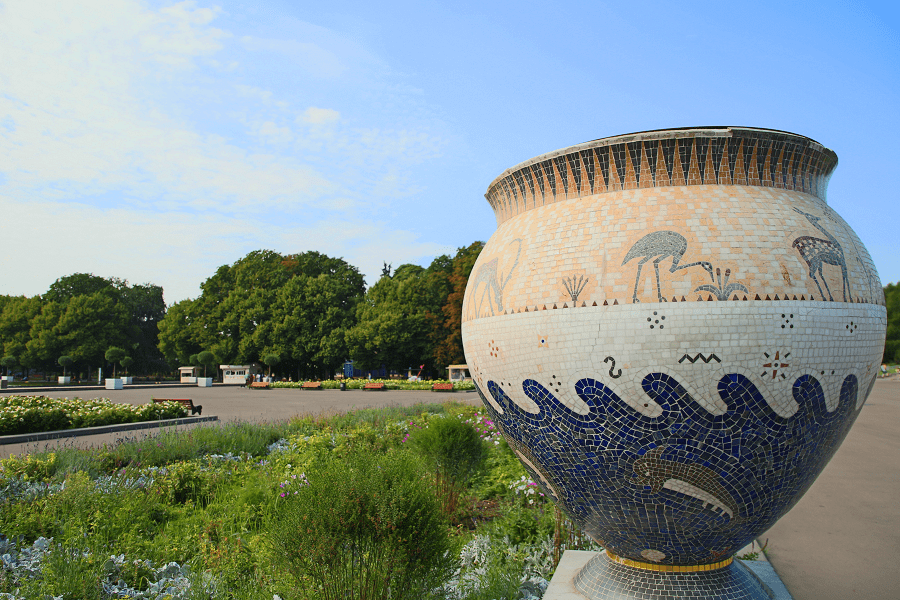The Central Park of Culture and Leisure, named after Maxim Gorky (Gorky Park), is a Moscow park of culture and recreation, a metropolitan recreational area, one of the largest and most popular in the city.
It includes Neskuchny Garden, Sparrow Hills and Muzeon. The total area of the park is 219.7 hectares.
On March 16, 1928, the Presidium of the Moscow City Council adopted a resolution to organize a park of culture and recreation on the territory of the former All-Russian Agricultural and Handicraft Exhibition.
The Moscow City Council allocated 200 thousand rubles to arrange the parking zone, and the State Bank – another 500 thousand. It was supposed to be the first Soviet park of culture and recreation, where it was planned to conduct extensive political, educational and cultural and educational work among the workers. The park would become a place for “mass propaganda of Soviet culture and proletarian art.”
The layout of the park’s parterre, designed by Konstantin Melnikov has been preserved to this day. Melnikov conceived a fountain in the center of the parterre, where “architecture was shaped by the jets of water itself.” The fountain was not installed then due to criticism from the constructivists.
However, in the mid-1930s, another one was built at the same place – according to the project of Vlasov. This bowl is the central point of Gorky Park: alleys and paths depart from it, and a recreational area unfolds.
Many of the sculptures in Gorky Park were made in 1934-1936 and, according to historian Katarina Kucher, were designed in a “heroic-classical style subordinate to the doctrine of socialist realism.” The park’s main and most famous sculpture is often called the “Girl with an Oar” by Ivan Shadr.
In 1974, two sculptures by Gavriil Schulz were installed in the park: “Swimmer” (1948) and “Winter” (1966). The second was made in the spirit of “plastic polyphony” from the cycle “The Seasons.” At the same time, a monument to the young Maxim Gorky was opened in the park.
Gorky Park is one of the main venues in the capital for holding such important city and state holidays as Victory Day, City Day, Airborne Forces Day, New Year, Christmas and Maslenitsa. For example, the park was significantly prepared for the anniversary of the celebration of the 70th anniversary of the Victory.
The park organizes some public events that develop the creative potential and principles of a healthy lifestyle among visitors. Thus, the Green Week program included yoga, lectures on proper nutrition, and an ecology day.
Gorky Park, despite a significant number of commercial facilities, continues to correspond to the level of the country’s main park, so dozens of free events are held on its territory every month – these are excursions around the park, where you can learn the history of famous sculptures, these are quests for visitors of all ages, as well as Nordic walking and many free sports programs. Excursions and programs are regularly updated, so looking for an up-to-date list on the park’s website is best.
The park hosts major sporting events: in 2014, the FIFA World Cup was exhibited in a special pavilion, and two years later, a fan zone was organized in the ground part for the Ice Hockey World Championship in Moscow.
Concerts of classical music, theatrical and ballet performances are periodically held on the park grounds. In June 2011, it celebrated the Karusel TV channel. In May 2013, within the framework of the International Day of Parks, the Central Park of Culture and Culture hosted a classical music concert, “Playing the Classics,” which brought together about 230,000 listeners.
A 15,000 square meter ice rink, with separate zones for children, hockey, dancing, and general skating, was officially opened in December 2011.
Famous foreign visitors to Gorky Park: Mayor of Belgrade Sines Mali, ambassadors of Germany, France, Great Britain, Australia, Albania, USA, Belgium, Lithuania, the Netherlands, Norway, Peru, Indonesia, Brunei, Panama, India, Greece, actors Will Smith and Louis Garrel, driver Lewis Hamilton, architect Rem Koolhaas and others.
Transport accessibility
Since 2013, there has been paid parking for visitors in front of the main entrance to the park, the entrance to which is carried out from the inside of the Garden Ring. The metro stations “Park Kultury” and “Oktyabrskaya” are within walking distance from the park. From Leninsky Prospekt, you can go to the Neskuchny Garden, and the Vorobyovy Gory metro station’s exit is located on the same name’s embankment.
See also all parks in Moscow
























